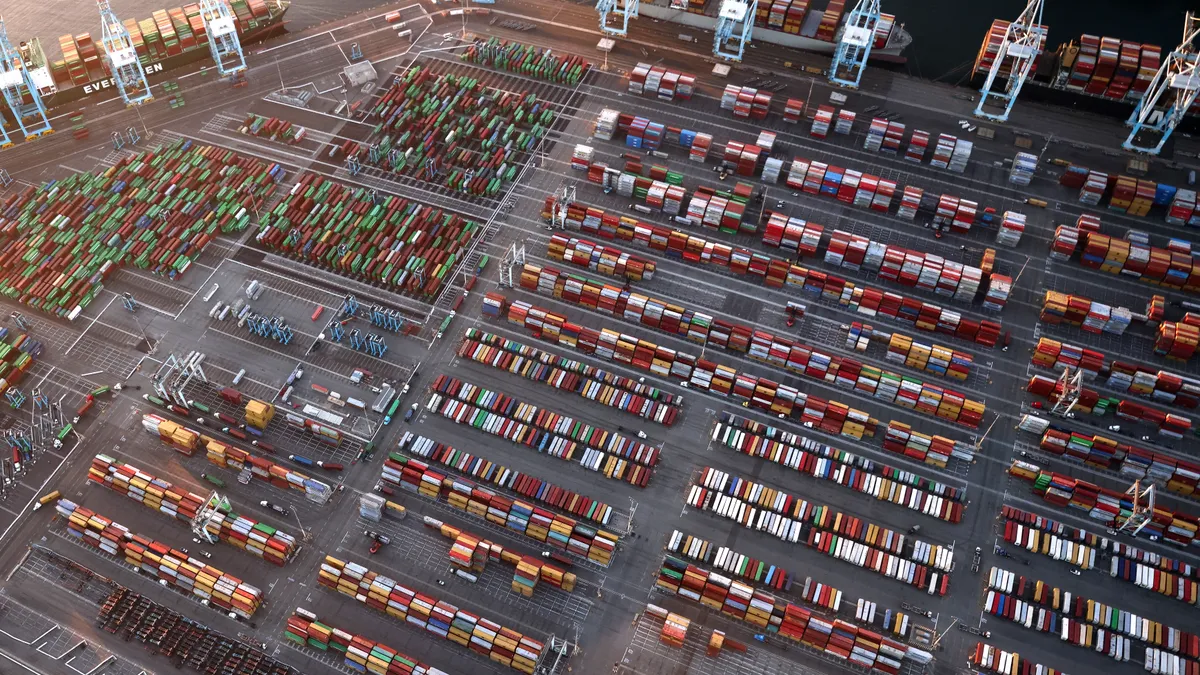Dive Brief:
- U.S. ports will have processed 4 million more TEUs by the end of 2021 than they did in 2020 as retail imports surged despite supply chain delays, according to data from the Hackett Associates' Global Port Tracker, which is prepared for the National Retail Foundation.
- The forecast shows how retail imports skyrocketed above 2020 levels as early as January 2021, and did not slow as congestion grew. In May 2021, for example, U.S. ports handled 2.33 million TEUs — a 52% increase YoY and 5% more than in October 2020, the previous year's high.
- The report estimates U.S. imports in Q4 2021 will level out compared to Q4 2020, as congestion built up over months is delaying the quick unloading of containers at U.S. ports.
Retail imports surged in 2021
Dive Insight:
Import figures for 2021 would have been higher were it not for port congestion, according to the NRF.
"Cargo doesn't get counted until it comes off the ships, and the wait times are long enough that cargo from ships arriving near the end of each month can slip over into the following month," J. Craig Shearman, vice president of government relations and public affairs, said in an email. "That is likely to continue until the congestion situation improves."
Port representatives in Los Angeles say the delays are due to a significant rise in imports, and not a lack of productivity. Executive Director Gene Seroka told CNN told Tuesday that vessel capacity utilization was up 30% in Transpacific lanes, and painted a picture of what that means for ports.
"It's like taking ten lanes of freeway traffic and moving them into five when the cargo gets here to the port," said Seroka. "We're still more productive than ever. Ship and vessel productivity are up 50% year on year."
The issue, Seroka said, is that the U.S. supply chain is having trouble moving that cargo inland and importers are "sitting on the cargo longer than ever."
Port programs designed to move cargo inland have seen low demand in part due to labor and surface transportation issues, according to the Global Port Tracker report.
"Some US port terminals are beginning to open gates 24 hours a day for container pickups, but there is limited demand because importers are suffering from a lack of drivers and warehouse workers combined with non-aligned hours of operation at warehouses," Hackett Associates Founder Ben Hackett wrote in the report.
The surge in imports and related congestion is also causing issues at the front-end of the supply chain, as cargo owners are having issues securing vessel capacity to ship their cargo to the U.S.
"It is estimated that between 10 and 15 percent of global container ship capacity is floating at anchor," Hackett wrote. And though large importers have gotten around the issue by chartering ships, Hackett wrote the actions will be "adding more congestion in the process."
Congestion, in addition to other risks like power outages in China and supply constraints, has Hackett estimating "current problems will continue well into 2022."














